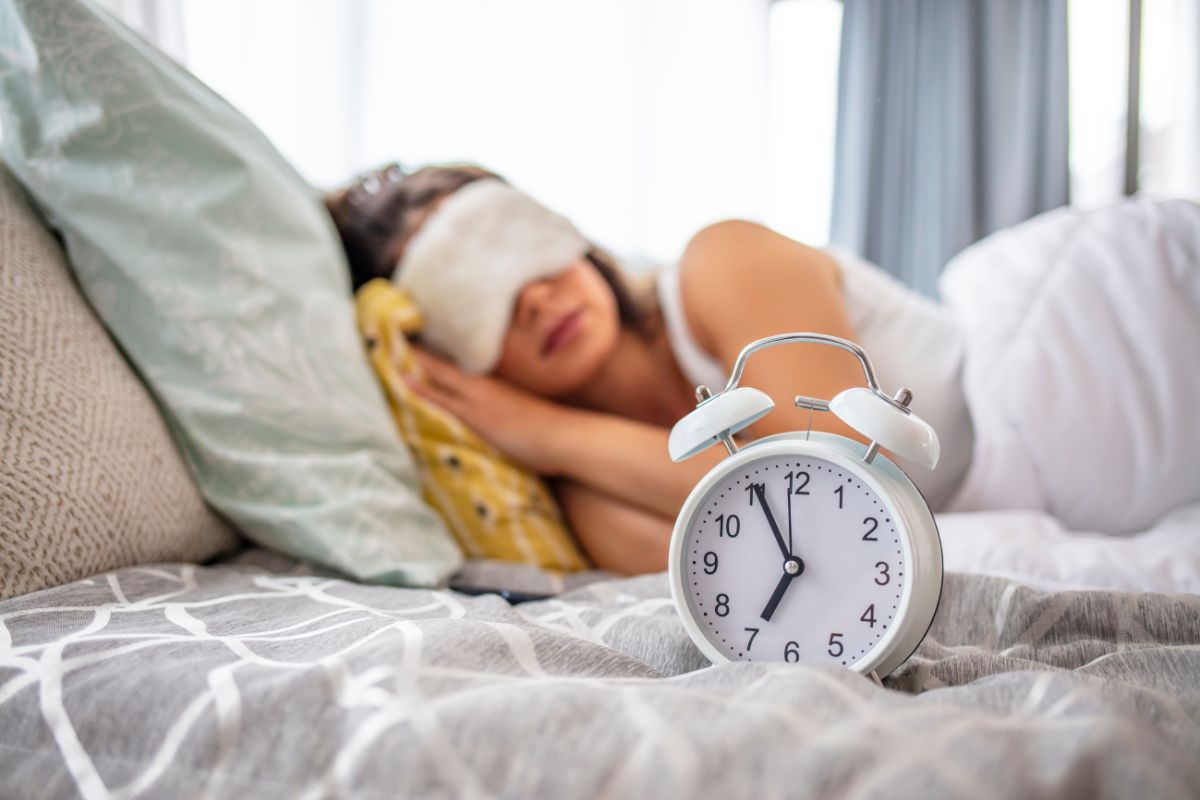How to Fix Your Sleep Schedule Naturally?

The circadian rhythm is our body’s 24-hour internal clock that drives sleep-wake cycles and many biological processes. In the brain’s suprachiasmatic nucleus (SCN), light signals set our clock each day. When sunlight hits the eyes in the morning, the SCN suppresses melatonin (the sleep hormone) and boosts alertness; at night, darkness triggers melatonin release to promote sleep. This day-night cycle regulates not only sleep and wakefulness but also hormones, body temperature, metabolism and other vital functions. When the circadian rhythm is aligned with the environment, we feel alert by day and sleepy by night; when it’s disrupted (for example by shift work or jet lag), our sleep timing and quality suffer markedly.
Common Causes of a Disrupted Sleep Schedule
Several factors can throw off your natural sleep-wake cycle. Key causes include:
-
Irregular schedules – Working night shifts, frequently changing schedules, or crossing time zones (jet lag) can misalign your clock. For example, shift workers often struggle to sleep in daylight, and jet lag makes the brain resistant to rapid time changes.
-
Poor sleep habits – Inconsistent bedtimes and wake-times, late-night screen use or irregular napping can confuse the circadian rhythm. Staying up late to work or scroll devices exposes you to light at the wrong time, delaying melatonin release and making it harder to fall asleep.
-
Light exposure at night – Artificial light (especially blue light from phones, TVs and laptops) in the evening tricks the brain into thinking it’s daytime, suppressing melatonin and pushing sleep later. Even indoor lighting can interfere with falling asleep on time.
-
Substances and diet – Large meals close to bedtime stimulate the body and disrupt sleep. Studies show that caffeine taken even 6 hours before bed significantly reduces sleep time. Alcohol may seem sedating, but it fragments sleep later in the night. Heavy or spicy dinners late at night can also lead to poor sleep and hormonal disturbances.
-
Stress and mental health – Anxiety, depression, or high stress levels increase “hyperarousal,” making it hard to wind down and fall asleep. Chronic stress can shift the sleep phase by delaying both sleep and wake times.
-
Age and physiology – Natural changes in the circadian system occur with age. Older adults often produce less melatonin and tend to wake up earlier. Teenagers also experience a biological delay in sleep timing during puberty, which can worsen late-night habits.
-
Medical conditions and medications – Health problems like chronic pain, breathing disorders (e.g. sleep apnea with loud snoring or gasping), or medications can interfere with normal sleep patterns. If sleep problems are severe or long-lasting, an underlying disorder may be at fault.
Natural Methods to Reset Your Sleep Schedule
Adjusting your lifestyle and environment can often realign the circadian rhythm without drugs. Key evidence-based strategies include:
-
Light exposure techniques: Use light to cue your internal clock. Get bright sunlight or indoor bright light soon after waking (ideally within 30–60 minutes) to advance your rhythm earlier. Just 30 minutes of morning sun exposure can “anchor” the circadian clock and improve alertness. Conversely, limit light in the evening. Turn off screens at least an hour before bed (blue light from devices suppresses melatonin). If needed, use specialized light therapy: for delayed sleep phase, a 15–30 minute session in the morning with a light box (or outdoor sun) can shift your clock earlier. For advanced sleep phase (early waking), timed bright light in the evening (around 7–9 PM) can push bedtime later. Always use light therapy under guidance: get bright light exposure only at the recommended time of day, and wear sunglasses or use blackout curtains in the early morning if you need to block light.
-
Consistent wake-up times: Set a firm wake-up time and stick to it every day, including weekends. Awakening at the same time each morning (even if it’s early at first) stabilizes your circadian clock and makes it easier to fall asleep at the new target time. It’s crucial not to “sleep in” too much on days off, as this can undo your progress. If you wake up early, get out of bed and stay active (even under dim light if needed) rather than returning to sleep late, to reinforce the new schedule. Over time, a consistent morning alarm helps reset your internal timing.
-
Good sleep hygiene habits: Optimize your bedtime routine and sleep environment. Keep the bedroom cool, dark, and quiet: use blackout curtains, eye masks or white-noise machines if needed. Reserve the bed for sleep (avoid using it for work or entertainment) so your brain associates bed with rest. Wind down each evening with relaxing activities (e.g. reading, gentle stretching or a warm bath) about 30–60 minutes before bed. Avoid stimulants and heavy meals close to bedtime. In particular, stop caffeine at least 6 hours before bed (a study showed caffeine 6 hours pre-bed still disrupted sleep), in the evening. Keep consistent sleep and wake times on weekdays and weekends; sleeping in or taking long naps on the weekend can undo sleep debt and shift your clock later.
-
Nutrition and meal timing: Regular meal times can reinforce circadian cues. Eat a balanced breakfast and avoid very late or heavy dinners. A light snack (e.g. yogurt or whole-grain cereal) before bedtime is okay if hungry, but large or spicy meals right before sleep can disturb digestion and circadian hormones. Keep caffeine consumption moderate: if you drink coffee or tea, have it in the morning or early afternoon, and stop by mid-afternoon to avoid interference at night. Finally, limit alcohol before bed: although it may make you drowsy initially, fragments the second half of sleep and suppresses REM, leading to poor quality sleep.
-
Physical activity timing: Regular exercise generally promotes better sleep, but timing matters. Aim for moderate exercise (walking, cycling, light gym) during the day or early evening. Studies show that people who stay active fall asleep faster and sleep more deeply. However, avoid vigorous workouts within 1–2 hours of bedtime, as intense exercise raises body temperature and arousal, making it harder to fall asleep. A brief evening walk can be relaxing, but save heavy cardio or weightlifting for earlier in the day whenever possible.
-
Natural supplements (non-prescription): Certain supplements may aid sleep timing but should be used cautiously. Melatonin is a hormone that signals darkness to your circadian clock. In low doses (commonly 0.5–3 mg), melatonin can help shift sleep timing. Research suggests it may shorten sleep latency for people with delayed sleep phase disorder (helping them fall asleep earlier). If used, take melatonin roughly 1–2 hours before your desired bedtime, not at the moment you get into bed. It’s best to start with a low dose and use only for a few weeks while adjusting your schedule, under a doctor’s guidance. Other natural aids with limited evidence include valerian root (300–600 mg before bed, which may improve sleep onset in some people) and magnesium (older adults with insomnia have shown some benefit). L-theanine (found in tea) can promote relaxation and reduce night awakenings. Remember that supplements are not tightly regulated; their effects can vary. Always choose reputable brands (USP-verified), use the lowest effective dose, and consult a healthcare professional before starting any new supplement.
Step-by-Step Plan to Shift Your Sleep Phase
Adjusting your sleep schedule usually requires gradual changes and consistency. Below is a generic routine outline to shift a delayed or advanced sleep phase. Tweak the timings to fit your target schedule:
-
Morning (Wake Time): Set an alarm for your target wake-up time (e.g. 7:00 AM). If adjusting earlier, force yourself up at that time even if sleepy. Immediately expose yourself to bright light (open curtains or go outside for 15–30 minutes). This morning light is the strongest cue to reset your clock. If adjusting later, consider using dim light or glasses that block blue light in the early morning, and stay out of bright sunlight until you’re ready to shift.
-
Daytime: Maintain a regular daily schedule. Eat breakfast at a consistent time, stay active, and avoid long naps (limit naps to 20–30 minutes before early afternoon). If you feel very tired from shifting your schedule, a short early-afternoon nap may help, but don’t nap too late or for too long.
-
Afternoon/Evening: Plan your evening to reinforce the new bedtime. For a delayed shift (going to bed earlier), start winding down about 1–2 hours before target bedtime: dim the lights, turn off screens, and engage in relaxing activities (reading, light stretching or a warm bath). For an advanced shift (going to bed later), keep the lights bright and stay moderately active in the early evening, and then begin winding down only after the new target time.
-
Bedtime Adjustment: Gradually move your bedtime in 15–30 minute steps each day. For example, if you currently fall asleep at 2:00 AM but want to sleep by 11:00 PM, try going to bed at 1:30 AM tonight, then 1:00 AM the next night, and so on, until you reach the goal. Always keep your wake-up time fixed; when your wake time is anchored, your body will eventually start feeling sleepy earlier. If sliding backward, a method called chronotherapy can also work: delay your bedtime 1–3 hours later each day until you loop around to the desired time, but this requires several consecutive free days without obligations. Whichever method you use, consistency is key: stick to the same routine every day, and avoid “catching up” sleep on weekends.
-
Supplemental Aids (if needed): If you hit a plateau, you may use aids strategically. For example, if delaying, a bright light therapy session (sit by a 2,000+ lux light box for ~30 minutes) first thing after your wake-up time can advance your clock. If advancing, a brief bright light exposure in the early evening can push bedtime later. Or, try taking melatonin about 1–2 hours before your newly intended bedtime to help initiate sleep onset, but only if other methods aren’t enough. Always use these aids sparingly and at the correct times as directed.
Over the course of 1–2 weeks of disciplined routine, your body should begin to adopt the new schedule. Keep reminding yourself to avoid late-night screens or activities that contradict your plan. Example daily timeline for a delayed phase shift: Wake at 7:00 AM (sunlight for 15–30 min), no caffeine after 1:00 PM, dim lights after 9:00 PM, lights off by 11:00 PM. Conversely, for an advanced shift (sleeping too early), one might wake at 6:00 AM, use blackout curtains until desired wake time, expose oneself to bright indoor light after 10:00 PM, and delay bedtime to 11:00–12:00 PM, and so on.
When to Seek Professional Help
Most mild sleep schedule problems improve with the above strategies within a few weeks. However, consult a healthcare provider if:
-
Sleep problems persist or worsen. If you’ve consistently struggled to fall asleep or wake up on time for several weeks despite good sleep habits, or if you still feel very sleepy or exhausted by day, medical guidance is warranted.
-
Severe daytime impairment. If sleep issues are causing dangerous or costly consequences – for example, excessive daytime drowsiness leading to accidents, work/school absences, or significant mood and concentration problems – see a doctor.
-
Unusual symptoms occur. Loud snoring, gasping/choking at night, or breathing pauses suggest possible sleep apnea or other disorders. Nightmares, sleepwalking, or extreme agitation upon waking also merit evaluation.
-
Possible circadian disorder. If you suspect you have a chronic circadian rhythm disorder (e.g. delayed or advanced sleep phase syndrome) – especially if there’s a family history – a sleep specialist can offer diagnosis and personalized treatment.
-
Drug dependence or complex cases. If you rely on sleep medications or supplements regularly, or if psychiatric conditions (like severe depression or anxiety) contribute to your insomnia, professional help is important.
A sleep medicine physician or qualified provider can perform a sleep history or study to uncover underlying disorders, adjust any necessary medications, and guide chronotherapy. In summary, if lifestyle changes over 4–6 weeks don’t normalize your sleep pattern, or if your sleep problems significantly disrupt life, it’s time to seek expert evaluation.






